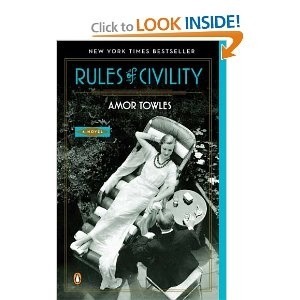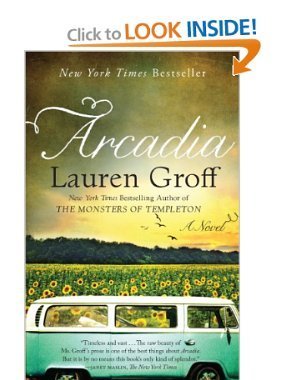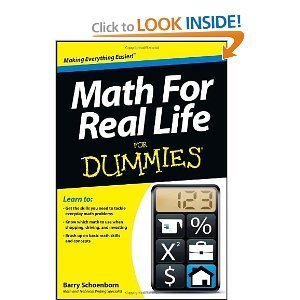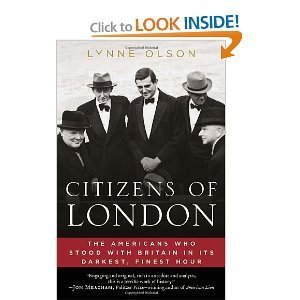Carol Anita Ryan's Blog, page 5
June 6, 2013
Memory and Self: Moonwalking With Einstein
 Without memory who are we? Ubiquitous cameras that seem to be recording our every experience along with the low cost of external memory storage combine to promise and threaten our memories. What does that really mean to our fundamental concept of self?
Without memory who are we? Ubiquitous cameras that seem to be recording our every experience along with the low cost of external memory storage combine to promise and threaten our memories. What does that really mean to our fundamental concept of self?
Joshua Foer provides facts and ideas with which to approach these questions in his fascinating and informative book, Moonwalking With Einstein. It is a nonfiction book written like a novel. While reading about true-life characters wacky enough to be creations of Comedy Central writers, you inadvertently learn a lot about memory.
The book traces the history of ideas about memory as well as practical tips and techniques for improving yours (for example: the title has to do with a memory technique). Several relevant studies about how the brain handles memory are reported. All these features are folded into the narrative of how the author spent a year preparing for the U.S. Memory Championship. This is a creative work of non-fiction at its best.
May 27, 2013
Memorial Day: Memory and Memoir: persistence and self
 Dali communicated his perspective on the persistence of memory in this famous painting. Memory is malleable, fleeting, and sometimes false. If you are writing a memoir or just recounting a memory—and you’re devoted to telling the truth—what to do?
Dali communicated his perspective on the persistence of memory in this famous painting. Memory is malleable, fleeting, and sometimes false. If you are writing a memoir or just recounting a memory—and you’re devoted to telling the truth—what to do?
You can start by reviewing journals, pictures, and mementos. But at some point you have to sit quietly and think. How did such and such come to happen? You will realize that telling a story requires both more and fewer facts than you have in your own memory.
Some sensational happenings just don’t fit the story you chose to tell. To weave an understandable plot you may have to braid together strands of memory material from different eras. That’s where the art of storytelling begins. You must employ emotional detail to engage the reader or listener. If you can’t draw the audience into the story, you won’t have an audience for long.
A lot has been said about the reduction in attention span these days, due in part to the competition for our attention by cell phones, for instance. It is harder to engage and hold attention now, so your story must make every word count. On the bright side, it seems to be a hard-wired human trait to seek stories. It is how we make memories persist.
May 5, 2013
Manhattan in the late 30s–a stylish novel setting
The novel, Rules of Civility, starts off with an intriguing prolog narrated by the central character, Katey Kontent. Since the author’s name is Amor it’s possible to imagine a woman writing the book. But no. The author is not the female narrator in her 20s in the crucial year (1938) of the story; but Amor Towles does a good job of slipping into another gender and another time. The place is Manhattan; the setting is the city from New Year’s Eve 1937 through 1938.
The story involves the young and beautiful in the glamorous pre-war days; the rich and the aspiring rich. In that particular setting the author presents the wise-cracking, stylish and clever characters that most of us only know from black and white movies of the era.
Frankly, the setting in the distant past, works to the author’s advantage. Not many are still around who can challenge the verisimilitude of the world Towles constructs. Without that constraint, readers can sit back and enjoy the writing on its considerable merits, and it’s a good story.
The book is stylish and entertaining but two weeks after finishing it I realized I hadn’t given it a second thought. For me, that is unusual, and not in a good way. However, the book sparked an interesting discussion among book group members–so my reactions may not be typical!
Manhattan in the late 30s–a sylish novel setting
The novel, Rules of Civility, starts off with an intriguing prolog narrated by the central character, Katey Kontent. Since the author’s name is Amor it’s possible to imagine a woman writing the book. But no. The author is not the female narrator in her 20s in the crucial year (1938) of the story; but Amor Towles does a good job of slipping into another gender and another time. The place is Manhattan; the setting is the city from New Year’s Eve 1937 through 1938.
The story involves the young and beautiful in the glamorous pre-war days; the rich and the aspiring rich. In that particular setting the author presents the wise-cracking, stylish and clever characters that most of us only know from black and white movies of the era.
Frankly, the setting in the distant past, works to the author’s advantage. Not many are still around who can challenge the verisimilitude of the world Towles constructs. Without that constraint, readers can sit back and enjoy the writing on its considerable merits, and it’s a good story.
The book is stylish and entertaining but two weeks after finishing it I realized I hadn’t given it a second thought. For me, that is unusual, and not in a good way. However, the book sparked an interesting discussion among book group members–so my reactions may not be typical!
April 6, 2013
Arcadia–Growing up in a commune
I had a boyfriend in college with strong ties to a commune overlooking Puget Sound on a beautiful island mid- point between Seattle and Canada. We spent long summer weekends there enjoying the quiet off-the-grid beauty of the natural world. I’ve often wondered what became of the community– especially two young children, Heron and Critter.
Finally someone has addressed this intriguing part of American history. Arcadia is a novel that explores life for Bit (the oddball name sounds authentic), who was born and raised in the fictional commune. Arcadia is founded by intelligent, well-meaning and committed people. Then, as is often the case, success attracted a different crowd contributing to its demise.
The first part of the novel is brilliantly told from Bit Stone’s childhood point of view. Arcadia is a large commune with a lot of activity. Sights, sounds and particularly smells are lavishly described—often in lyrical language. Bit is a sensitive child who although he suffers from his mother’s depression, a lack of food, the cold, and a general lack of creature comforts, has no interest is leaving the only home he’s ever known.
This part of the book is packed with thought-provoking details. Except for the author’s irritating decision not to use punctuation to indicate speech, the book has its strengths. Lauren Groff did a great job on commune life. For example, the commune is led by a charismatic musician, Handy, who becomes predictably corrupt. The powerful effect of popular music on the counter-culture of the time was accurate and believable. However, 1) such a commune would have thrived slightly earlier in time, not after Jonestown, or Ronald Reagan’s election and 2) a raison d’êtrefor the commune (the draft for the war in Vietnam) would have been more prominent in everyone’s consciousness. On the real-life commune I knew, people dodging the draft on their way to Canada were often drop-ins. Their unexpected stays often depleted the resources of the generous community.
The last part of the novel was weak. There is very little plot and what there is seems silly (a pandemic named ‘SARI’). It’s as if Groff ran out of juice after her strong start. I wanted to learn how Bit handled the transition to life beyond Arcadia, but that was skipped over. As with the lives of Heron and Critter, I still wonder.
March 23, 2013
Sailboat Rescued in the Marquesas
The air reeked of rotting bananas where we cut through the plantation. There was also the faint salty scent of the ocean far below. From where we stopped, we could see our boat, and the other sailboats, in the harbor. But something was wrong with the beautiful picture; Gene’s boat, Paragrin, was not alongside Velela but was at an odd angle separate from the other boats, and headed out to sea.
We were too far away to see what was happening.
Later, at the bar where people on the island met, we heard. Beer- infused sailors told the tale in loud voices. Our captain, and the young blonde captain of another boat, had taken a dinghy out to the anchorless Paragrin, jumped aboard, and corralled Paragrin back to safety. Charley donated our spare anchor to secure the boat in safe waters.
All of us at the bar were certain Gene would be eternally grateful. His boat, and that meant everything he owned, had been saved for him while he was away.
But when Gene arrived from his hike to the other side of the island and learned of the afternoon’s events, he seemed relaxed about it. It was not at all what the drinkers at the bar expected. That was just the first indication that Gene, who we would meet at other island on our way across the Pacific, was an unusual guy.
March 20, 2013
Be a real life success with Math for Real Life
Math For Real Life for Dummies is the Swiss Army knife of reference books. It’s useful, packed with the necessary and easy to find tools, and compact enough (at about 6” x 9”) to fit where needed. You can take the book on an airline and no questions will be asked.
The author, Barry Schoenborn, has a remarkable gift for explaining, in a funny and light-hearted way, how to solve the quantitative problems of everyday life.
Before the book came along, I tried to explain how to calculate miles/per gallon to an intelligent person with limited math skills. I thought it was obvious—didn’t everyone’s father drill that as a requirement for driving? Well, no, it turns out. It was frustrating to discover my false assumptions and to fail in my task. That’s when the hours spent so long ago by my teachers and parents requiring me to memorize the multiplication tables finally made sense. Mr. Schoenborn kindly starts with the basics and calmly shows how to solve problems for everyone—even those not blessed with a strong math foundation.
Although the title says for Dummies, don’t let that turn you off. Even if you think you know how to calculate gambling odds, for example, it’s enlightening and entertaining to see what the author reveals. There are so many things you may have known once (like how to calculate how much paint to buy), but Mr. Schoenborn takes you through it.
For generations who’ve grown up with calculators everywhere it must seem unnecessary to learn basic math skills (including memorizing those multiplication tables), but as the author points out, it allows for mental math and quick estimates, and it’s the basis for many kinds of calculations. The book also shows how to analyze and simplify everyday problems. In our market based economy real life math skill are survival skills.
This book is a must-have for any home and every car’s glove compartment.
March 19, 2013
Be a real life success with this book
Math For Real Life for Dummies is the Swiss Army knife of reference books. It’s useful, packed with the necessary sharp tools, and compact enough (at about 6” x 9”) to fit in most places where needed. The tools are easy to find on the knife or in the book. You can take the book on an airline and no questions will be asked.
The author, Barry Schoenborn, has a remarkable gift for explaining, in a funny and light hearted way, how to solve the quantitative problems of everyday life.
Before the book came along, I tried to explain how to calculate miles/per gallon to an intelligent person with limited math skills. I thought it was obvious—didn’t everyone’s father drill that as a requirement for driving? Well, no, it turns out. It was a frustrating to discover my many assumptions and to fail in my task. That’s when the hours spent so long ago by my teachers and parents requiring me to memorize the multiplication tables finally made sense. Mr. Schoenborn kindly starts with the basics and calmly shows how to solve problems for everyone—even those not blessed with a strong math foundation.
Although the title says for Dummies, it’s for everyone. Even if you think you know how to calculate gambling odds, for example, it’s enlightening and entertaining to see what the author reveals. There are so many things you may have known once (like how to calculate how much paint to buy), but Mr. Schoenborn takes you through it.
For generations who’ve grown up with calculators everywhere it must seem unnecessary to learn basic math skills (including memorizing multiplication tables), but as the author points out, it allows for mental math and quick estimates, and it’s the basis for many kinds of calculations. In our market based economy it’s a survival skill.
This book is a must-have for any home and auto glove box.
March 12, 2013
Thinking about The Citizens of London: a review
Over dinner in a private room of the fragrant restaurant, we gathered to discuss Citizens of London: The Americans Who Stood with Britain in Its Finest Hour by Lynne Olson. The eight of us sat around a long rectangular wooden table agreeing how little we had known about the topic prior to reading the book. We were all born in the 1940s or 1950s, so that war was important to our parents and grandparents. Not so much to our generation. Someone sagely suggested we each say a bit about how our parents experienced the war.
This meeting took place in northern California but several of us had been raised elsewhere. The experiences were not just geographically diverse our parents had wildly different war experiences.
A couple of fathers stayed at home in civil defense capacities, due to their age or family responsibilities.
One of our fathers was unlucky enough to be shot down over France early in the war and endured near starvation in German prisoner-of-war camps only to be almost killed during a Soviet liberation.
Another father had the inverse war story. He managed to arrive in North Africa and Italy after the fighting, when dancing, drinking, and having a good time was all he reported doing for the duration.
One set of grandparents had the misfortune of being Jewish in Eastern Europe (but the blonde looks to pass as gentile). Many of their friends and family were unable to escape and lost their lives not just everything they owned.
My dad sailed across the Pacific on a cheaply made naval vessel dodging cyclones, torpedoes, and bombs, mostly successfully. Only recently have I learned about this war experience and his survivor guilt, as it just wasn’t discussed when I was a kid.
Whatever family’s war time experiences, few Americans fully comprehended what was happening in London prior to the U. S. entering the war. The book gives a vivid, sometimes intimate look at the key players in London prior to and during World War 2. Many of the important ones (Gil Winant, being the most important), I’d never heard of. The secret lives and loves of all are revealed, along with the mind numbing geo-political escapades of the great powers.
The book is a treasury of information and it is guaranteed to get you thinking about a very important time in history.
March 3, 2013
free eBook edition
It's an adventure in paradise for mid-life lovers until the unexpected happens.
https://www.smashwords.com/books/view...








